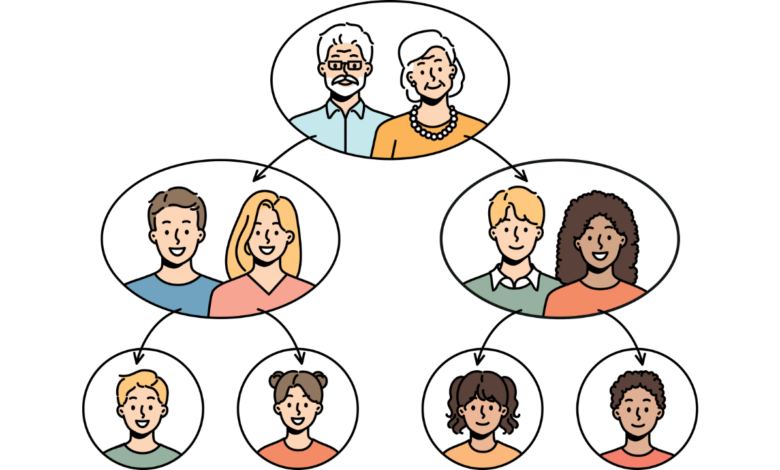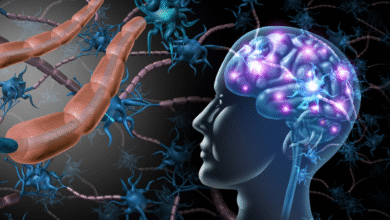Family History and Genetics: Understanding

Why is family history important in assessing genetic risk?
Genetic testing analyzes your DNA to identify changes in your genes or chromosomes. These changes can indicate an increased risk of developing certain diseases, or confirm a diagnosis of a genetic condition. There are several types of genetic tests, each with its own specific application.
Why is family history important in assessing genetic risk?
- Family history is a valuable tool for assessing genetic risk because it can reveal patterns of inheritance within a family. By looking at the health history of your close relatives, you can get a sense of whether you are at increased risk for developing certain conditions.
- Family history can also help to identify specific genetic mutations that are running in your family. This information can be used to determine whether you should consider genetic testing.
- Even if you do not have a family history of a particular condition, you may still be at risk. This is because some genetic mutations are new and have not yet been passed down through the family.
- It is important to remember that family history is only one factor to consider when assessing genetic risk. Other factors, such as your age, race, and lifestyle, can also play a role.
- If you are concerned about your genetic risk, it is important to talk to your doctor or a genetic counselor. They can help you assess your risk and determine whether genetic testing is right for you.
What is a “significant” family history of a disease?
Genetic testing analyzes your DNA to identify changes in your genes or chromosomes. These changes can indicate an increased risk of developing certain diseases, or confirm a diagnosis of a genetic condition. There are several types of genetic tests, each with its own specific application.
What is a “significant” family history of a disease?
A “significant” family history of a disease is one that increases your risk of developing that disease. This can be due to a variety of factors, including:
- The number of affected relatives: The more relatives you have with a particular disease, the higher your risk.
- The degree of relationship to affected relatives: Having a parent or sibling with a disease increases your risk more than having a more distant relative with the disease.
- The age of onset of the disease in affected relatives: Having relatives who developed a disease at a younger age increases your risk more than having relatives who developed the disease at an older age.
- The presence of multiple affected relatives in multiple generations: This is a strong indicator of a genetic predisposition to a disease.
- The presence of certain patterns of inheritance: Some diseases are inherited in a dominant pattern, which means that only one copy of a mutated gene is needed to cause the disease. Other diseases are inherited in a recessive pattern, which means that two copies of a mutated gene are needed to cause the disease.
- The presence of other risk factors: Having other risk factors for a disease, such as smoking or obesity, can increase your risk even further if you have a family history of the disease.
Here are some examples of what might be considered a “significant” family history of a disease:
- Having two or more first-degree relatives (parents, siblings, or children) with the same disease
- Having a first-degree relative with a disease that was diagnosed at a young age
- Having multiple affected relatives in multiple generations
- Having a family history of a rare disease
- Having a family history of a disease that is more common in a certain ethnic group
How far back in my family history should I look (e.g., parents, grandparents, siblings, aunts, uncles, cousins)?
How far back in my family history should I look?
Genetic testing analyzes your DNA to identify changes in your genes or chromosomes. These changes can indicate an increased risk of developing certain diseases, or confirm a diagnosis of a genetic condition. There are several types of genetic tests, each with its own specific application.
How far back in my family history should I look?
In general, the more information you have about your family history, the better. However, it is most important to focus on your first-degree relatives, which include your:
- Parents
- Siblings
- Children
You should also gather information about your second-degree relatives, which include your:
- Grandparents
- Aunts and uncles
- Nieces and nephews
- Half-siblings
If you have a strong family history of a particular disease, you may also want to gather information about your third-degree relatives, which include your:
- First cousins
- Great-grandparents
What information should I collect about my family’s health history?
What information should I collect about my family’s health history?
Genetic testing analyzes your DNA to identify changes in your genes or chromosomes. These changes can indicate an increased risk of developing certain diseases, or confirm a diagnosis of a genetic condition. There are several types of genetic tests, each with its own specific application.
What information should I collect about my family’s health history?
When collecting information about your family’s health history, it is important to be as thorough and accurate as possible. This information will be used to assess your risk of developing certain diseases, and it may also be used to determine whether genetic testing is right for you.
Here is a list of information that you should collect about your family’s health history:
- Full name
- Sex
- Date of birth
- Ethnicity
- Any major medical conditions
- Age at diagnosis of any medical conditions
- Any birth defects
- Any learning disabilities or developmental delays
- Any mental health conditions
- Any history of cancer
- Any history of heart disease
- Any history of diabetes
- Any history of other chronic diseases
- Cause of death (if deceased)
- Age at death (if deceased)
You should collect this information for all of your first-degree relatives (parents, siblings, and children), as well as your second-degree relatives (grandparents, aunts, uncles, nieces, and nephews). If you have a strong family history of a particular disease, you may also want to collect information about your third-degree relatives (first cousins and great-grandparents).
How can I collect information about my family’s health history, especially if relatives are deceased or estranged?
What information should I collect about my family’s health history?
Genetic testing analyzes your DNA to identify changes in your genes or chromosomes. These changes can indicate an increased risk of developing certain diseases, or confirm a diagnosis of a genetic condition. There are several types of genetic tests, each with its own specific application.
What information should I collect about my family’s health history?
When collecting information about your family’s health history, it is important to be as thorough and accurate as possible. This information will be used to assess your risk of developing certain diseases, and it may also be used to determine whether genetic testing is right for you.
Here is a list of information that you should collect about your family’s health history:
- Full name
- Sex
- Date of birth
- Ethnicity
- Any major medical conditions
- Age at diagnosis of any medical conditions
- Any birth defects
- Any learning disabilities or developmental delays
- Any mental health conditions
- Any history of cancer
- Any history of heart disease
- Any history of diabetes
- Any history of other chronic diseases
- Cause of death (if deceased)
- Age at death (if deceased)
You should collect this information for all of your first-degree relatives (parents, siblings, and children), as well as your second-degree relatives (grandparents, aunts, uncles, nieces, and nephews). If you have a strong family history of a particular disease, you may also want to collect information about your third-degree relatives (first cousins and great-grandparents).
Here are some tips for collecting information about your family’s health history:
- Talk to your relatives. This is the best way to get accurate information about your family’s health history.
- Look at medical records. If you have access to your relatives’ medical records, this can be a valuable source of information.
- Use online resources. There are a number of online resources that can help you collect and organize your family health history information.
How can I collect information about my family’s health history, especially if relatives are deceased or estranged?
Genetic testing analyzes your DNA to identify changes in your genes or chromosomes. These changes can indicate an increased risk of developing certain diseases, or confirm a diagnosis of a genetic condition. There are several types of genetic tests, each with its own specific application.
How can I collect information about my family’s health history, especially if relatives are deceased or estranged?
Collecting information about your family’s health history can be challenging, especially if relatives are deceased or estranged. However, there are a number of resources that you can use to gather this information.
Here are some tips for collecting information about your family’s health history:
- Talk to your relatives. This is the best way to get accurate information about your family’s health history. Even if you are estranged from some relatives, you may be able to contact them through other family members or through social media.
- Look at medical records. If you have access to your relatives’ medical records, this can be a valuable source of information.
- Use online resources. There are a number of online resources that can help you collect and organize your family health history information. These resources include:
- The National Institutes of Health (NIH) Genetic Testing Registry
- The National Society of Genetic Counselors (NSGC)
- The American College of Medical Genetics and Genomics (ACMG)
- Look at death certificates. Death certificates can provide information about the cause of death of your relatives.
- Look at family histories and genealogies. These resources can provide information about your relatives’ medical conditions.
- Consider using a genetic testing service. Genetic testing services can provide you with information about your risk of developing certain diseases based on your DNA.
How does family history interact with other risk factors for disease (e.g., lifestyle, environment)?
Genetic testing analyzes your DNA to identify changes in your genes or chromosomes. These changes can indicate an increased risk of developing certain diseases, or confirm a diagnosis of a genetic condition. There are several types of genetic tests, each with its own specific application.
How does family history interact with other risk factors for disease (e.g., lifestyle, environment)?
Family history is a valuable tool for assessing genetic risk, but it is important to remember that it is not the only factor that contributes to disease. Other factors, such as lifestyle and environment, can also play a role.
Here are some ways that family history can interact with other risk factors for disease:
- Family history can increase your susceptibility to environmental risk factors. For example, if you have a family history of lung cancer, you are at increased risk of developing lung cancer if you smoke.
- Lifestyle choices can modify your risk of developing a disease, even if you have a family history of the disease. For example, if you have a family history of heart disease, you can reduce your risk by eating a healthy diet, exercising regularly, and not smoking.
- Environmental factors can also modify your risk of developing a disease, even if you have a family history of the disease. For example, if you have a family history of skin cancer, you can reduce your risk by protecting yourself from the sun.
How does family history influence ?
Can a lack of family history of a disease guarantee I won’t develop it?
Genetic testing analyzes your DNA to identify changes in your genes or chromosomes. These changes can indicate an increased risk of developing certain diseases, or confirm a diagnosis of a genetic condition. There are several types of genetic tests, each with its own specific application.
Can a lack of family history of a disease guarantee I won’t develop it?
No, a lack of family history of a disease does not guarantee that you won’t develop it. This is because there are many factors that can contribute to disease, including:
- New genetic mutations: These are changes in your DNA that are not inherited from your parents.
- Environmental factors: These include things like exposure to toxins, diet, and exercise.
- Lifestyle choices: These include things like smoking, drinking alcohol, and drug use.
Even if you do not have a family history of a particular disease, you may still be at risk due to one or more of these other factors.
How does family history influence genetic risk?
Family history is a valuable tool for assessing genetic risk because it can reveal patterns of inheritance within a family. By looking at the health history of your close relatives, you can get a sense of whether you are at increased risk for developing certain conditions.
Family history can also help to identify specific genetic mutations that are running in your family. This information can be used to determine whether you should consider genetic testing.
Even if you do not have a family history of a particular condition, you may still be at risk. This is because some genetic mutations are new and have not yet been passed down through the family.
It is important to remember that family history is only one factor to consider when assessing genetic risk. Other factors, such as your age, race, and lifestyle, can also play a role.
If you are concerned about your genetic risk, it is important to talk to your doctor or a genetic counselor. They can help you assess your risk and determine whether genetic testing is right for you.
The risk of common diseases like cancer, heart disease, diabetes, and Alzheimer’s?
How does family history influence the risk of common diseases like cancer, heart disease, diabetes, and Alzheimer’s?
Genetic testing analyzes your DNA to identify changes in your genes or chromosomes. These changes can indicate an increased risk of developing certain diseases, or confirm a diagnosis of a genetic condition. There are several types of genetic tests, each with its own specific application.
How does family history influence the risk of common diseases like cancer, heart disease, diabetes, and Alzheimer’s?
Family history is a valuable tool for assessing genetic risk because it can reveal patterns of inheritance within a family. By looking at the health history of your close relatives, you can get a sense of whether you are at increased risk for developing certain conditions.
Here are some ways that family history can influence the risk of common diseases:
- Cancer: A family history of cancer can increase your risk of developing certain types of cancer, such as breast cancer, ovarian cancer, colon cancer, and prostate cancer. The risk is higher if you have multiple affected relatives, if they were diagnosed at a young age, or if they have a rare type of cancer.
- Heart disease: A family history of heart disease can increase your risk of developing heart disease, stroke, and other cardiovascular problems. The risk is higher if you have a parent or sibling who was diagnosed with heart disease before the age of 55 (for men) or 65 (for women).
- Diabetes: A family history of diabetes can increase your risk of developing type 2 diabetes. The risk is higher if you have a parent or sibling with diabetes.
- Alzheimer’s disease: A family history of Alzheimer’s disease can increase your risk of developing Alzheimer’s disease. The risk is higher if you have a parent or sibling who was diagnosed with Alzheimer’s disease at a younger age.
What patterns in family history suggest a stronger genetic component (e.g., early onset, multiple affected relatives, rare diseases)?
What patterns in family history suggest a stronger genetic component?
Genetic testing analyzes your DNA to identify changes in your genes or chromosomes. These changes can indicate an increased risk of developing certain diseases, or confirm a diagnosis of a genetic condition. There are several types of genetic tests, each with its own specific application.
What patterns in family history suggest a stronger genetic component?
Certain patterns in a family’s health history can suggest a stronger genetic component to a disease. These patterns include:
- Early onset of disease: When a disease occurs at an earlier age than usual in multiple family members, it can be a sign of a genetic predisposition. For example, if several family members have been diagnosed with colon cancer before the age of 50, this may suggest a hereditary cancer syndrome.
- Multiple affected relatives: Having multiple family members with the same or related conditions, especially in close relatives (parents, siblings, children), can indicate a stronger genetic component.
- Rare diseases: If a rare disease is present in multiple family members, it is more likely to be due to a genetic mutation.
- Multiple generations affected: When a disease appears in multiple generations of a family, it is more likely to be inherited.
- Certain combinations of diseases: Some genetic conditions increase the risk of developing multiple different diseases. For example, certain genetic mutations increase the risk of both breast and ovarian cancer.
- Disease in both sides of the family: If a disease is present in both the mother’s and father’s sides of the family, it is more likely to be due to a genetic mutation.
- Consanguinity: Consanguinity, or “blood relations” (e.g., marriage between cousins), increases the risk of inheriting recessive genetic disorders.
If a disease appears on both sides of my family, does that increase my risk?
Genetic testing analyzes your DNA to identify changes in your genes or chromosomes. These changes can indicate an increased risk of developing certain diseases, or confirm a diagnosis of a genetic condition. There are several types of genetic tests, each with its own specific application.
If a disease appears on both sides of my family, does that increase my risk?
Yes, if a disease appears on both sides of your family, that generally increases your risk of developing the disease. This is because it suggests that there may be a stronger genetic component to the disease in your family.
Here are some reasons why having a disease on both sides of your family can increase your risk:
- You may have inherited a genetic mutation from both parents. This is especially true for recessive genetic disorders, which only occur if you inherit two copies of a mutated gene, one from each parent.
- You may have inherited multiple genetic mutations that increase your risk of the disease. Even if you don’t have a single gene mutation that causes the disease, you may have inherited multiple gene mutations that each contribute to your risk.
- You may have inherited a genetic mutation that is more common in certain ethnic groups. Some genetic mutations are more common in certain ethnic groups. If you have a family history of a disease on both sides of your family, you may be more likely to have inherited a genetic mutation that is common in your ethnic group.
If you have a family history of a disease on both sides of your family, it is important to talk to your doctor or a genetic counselor. They can help you assess your risk and determine whether genetic testing is right for you.





